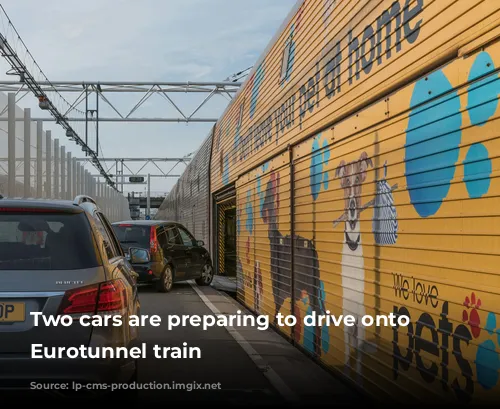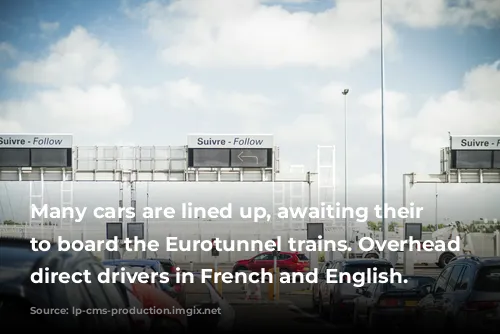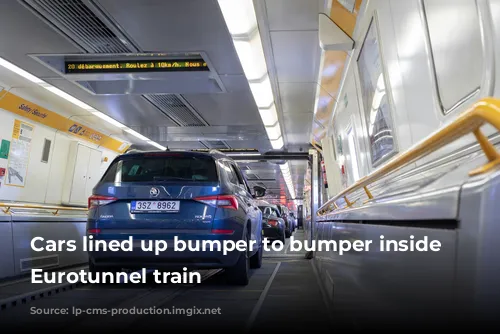The Eurotunnel, a marvel of modern engineering, connects England and France beneath the English Channel, creating a seamless link between two great nations. Opened in May 1994, this remarkable feat of infrastructure has facilitated the movement of millions of travelers and goods across the channel. Since its inception, the Eurotunnel, also known as LeShuttle, has carried an average of 10 million passengers annually, making it a vital artery for international travel and trade.

The Eurotunnel vs. The Ferry: A Tale of Two Journeys
For those seeking a swift and efficient journey across the Channel, the Eurotunnel presents a compelling alternative to traditional ferry services. While ferries typically take 90 minutes to cross the Channel, the Eurotunnel boasts a remarkable 35-minute journey time, offering travelers a significant time advantage. This speed advantage comes at a cost, however, as LeShuttle is often priced higher than ferries.
The choice between ferry and Eurotunnel depends largely on individual priorities. Ferry travel allows passengers to relax and enjoy the scenic views of the Channel, while the Eurotunnel offers a more direct and rapid transit experience. Whether you are a driver seeking to minimize travel time or a family looking for a budget-friendly option, both options cater to different needs and preferences.

Navigating the Eurotunnel: A First-Time Guide
For those embarking on their first Eurotunnel journey, a little preparation goes a long way. Here’s a step-by-step guide to ensure a smooth and enjoyable experience:
Booking Your Trip:
– Plan ahead! Book your tickets online in advance to secure your preferred travel time.
– Provide Advance Passenger Information (API): Before your journey, you’ll need to provide personal details for all passengers traveling in your vehicle.
Arriving at the Terminal:
– Arrive one to two hours ahead of your scheduled crossing time.
– Follow the clearly marked signs to the Eurotunnel site.
– Check-in kiosks are conveniently located throughout the terminal, offering a choice between automated and staff-assisted service.
Boarding the Train:
– Once you’ve completed check-in, you’ll be assigned a letter or letter/number combination, which you should display on your rearview mirror.
– Staff may direct you to a designated parking area or wave you straight through to the train.
– Stay informed: Monitor the large screens throughout the terminal for updates on boarding times.
Passing Through Passport Control:
– When your assigned letter is called, proceed to passport control.
– Prepare for potential wait times as cars are checked at both UK and French borders.
Boarding the Train and Departing:
– After passport control, you’ll be directed to a specific lane for boarding.
– Follow staff instructions as you board the train, navigating the upper level and parking securely.
– Prepare for a basic ride: The train offers limited amenities, with minimal facilities for passengers.
Arriving at Your Destination:
– As the train approaches your destination, you will be guided back to your vehicle.
– Wait for the cars in front of you to move before starting your engine.
Travel Tips:
– Don’t be surprised by detours: In Calais, you may be directed on a detour to manage traffic flow.
– Be aware of parking areas: Parking is designated throughout the Eurotunnel site, and staff will guide you appropriately.
– Expect potential delays: Be prepared for occasional delays and potential adjustments to your scheduled crossing time.

Beyond the Eurotunnel: Exploring the French Coast
The Eurotunnel is not just a means of transport; it’s a gateway to the Côte d’Opale, a picturesque region along the French coastline. Just a short drive from the Eurotunnel’s French terminal in Coquelles, this captivating region offers stunning beaches, charming villages, and vibrant cities.
Whether you’re seeking a relaxing beach getaway, a cultural adventure, or a culinary journey through the region’s renowned cuisine, the Côte d’Opale promises a memorable experience for all.

Conclusion
The Eurotunnel, a testament to human ingenuity, has revolutionized travel between England and France, offering a convenient, fast, and efficient mode of transport. Whether you’re a seasoned traveler or a first-time explorer, navigating the Eurotunnel is a straightforward and enjoyable experience, offering a seamless transition into the heart of Europe.











